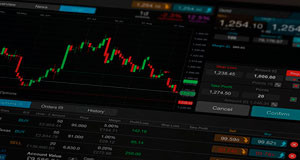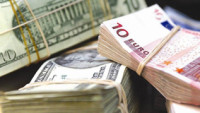 New record highs for US markets last night as the rebound in global markets continued yesterday on expectations that firstly further stimulus is quite likely to be on the way, and secondly the likelihood of a US rate rise has receded into next year.
New record highs for US markets last night as the rebound in global markets continued yesterday on expectations that firstly further stimulus is quite likely to be on the way, and secondly the likelihood of a US rate rise has receded into next year.
The recent decline in the yuan against the US dollar has prompted concern in recent days that the Chinese economy may not be doing as well as originally thought. While markets were otherwise distracted by events in the UK, the yuan has slipped to levels last seen at the turn of the year.
We already know from recent PMI data from both the manufacturing and services sectors of the Chinese economy that economic activity may have faltered in Q2, though we have seen some early evidence of a pickup in services in the June numbers. The strength of the yuan has acted as a brake on Chinese exports in recent months and this could well be why Chinese authorities have allowed the yuan to drift lower in recent weeks.
This morning’s trade numbers could well reflect that concern with June exports expected to decline by 5% contrasting with the 4.1% decline in May. The inability to boost exports is likely to increase the pressure on the yuan in the short term, which in turn could well see it decline further towards 6.80 against the US dollar.
Imports are also expected to decline 6.2% down from the -0.4% seen in May.
As a guide to this Friday’s Q2 GDP numbers these numbers if confirmed would appear to suggest that the 6.7% GDP growth seen in Q1 is likely to be difficult to match, with an expectation of 6.5% on the margins.
Turning to the UK, the pound had its best day in weeks yesterday as it carved through a load of stops from 1.3020 right through the 1.3300 level as markets revelled in the prospect of some form of certainty at the top of government. This new found stability may also have tempered some of the prospect of an imminent rate cut at tomorrow’s Bank of England rate meeting, given that credit conditions are significantly easier than they were three weeks ago, due to the relaxing of banks capital buffer requirements and the up to £250bn of available extra liquidity that can be called upon if required at the various liquidity auctions.
Yesterday we saw Bank of England Mark Carney face some intensive questioning from MP’s about the Bank of England’s role in the lead-up to the recent referendum vote as well as his calm reaction in calming financial markets in the volatile aftermath.
The latest quarterly credit conditions survey is likely to shed some light on how the uncertainty in the lead-up to the referendum affected business activity and spending patterns as well as the effectiveness of the new measures employed in the aftermath of the volatility as we get an insight into the workings of the financial system in the lead-up to the vote and its aftermath.
Last week’s US payrolls report would appear to show that the US economy is doing ok in terms of the headline jobs number, and recent manufacturing data would appear to suggest that the worst is over for the sector.
Today’s Federal Reserve Beige Book could well reinforce that sentiment and in so doing start to shift the dial in terms of the timing of a potential US rate rise.
Previous surveys have pointed to a fairly optimistic outlook albeit concerns in patches with respect to wage growth. While a July and September rate rise would seem out of the question given current global concerns a decent survey won’t deter some Fed members from rattling the prospect of a rise in rates, even if they know they won’t be able to deliver one.
EURUSD – finding some bids at the 1.1000 area but still drifting with the bias remaining towards a move towards the March lows at 1.0825. To stabilise we need to see a move back above the 1.1250 area.
GBPUSD – this week’s break above 1.3050 has seen an overspill through the 1.3200 level and could well extend to 1.3550. If we can’t sustain this break above 1.3000 we could well head back towards the lows at 1.2800 and head towards the 1.2500 area.
EURGBP – the odds of a move towards 0.8706 appear to have disappeared completely having broken below the 0.8400 area, running the risk of a deeper move towards 0.8250. We need a recovery back through the 0.8480 area to signal a move back higher.
USDJPY – having broken through the 103.50 area we could well head back towards 105.50. The 103.30 area should now act as support for a move back towards the 106.80 area. Back below the 103.30 area retargets the 100 level.












